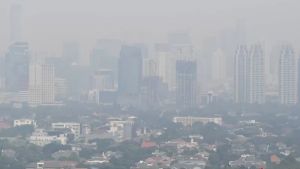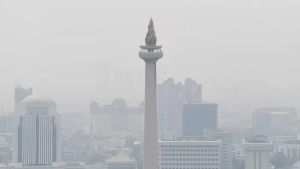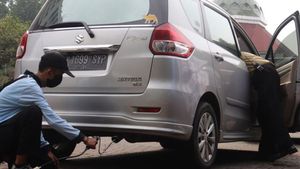JAKARTA - The government is wary of worsening air quality in Jakarta during the dry season. Head of the DKI Jakarta Environmental Agency, Asep Kuswanto, said that the air quality in the capital city will worsen until August.
"When entering the dry season from May to August, there will be a decrease in air quality in the DKI Jakarta area, which is marked by an increase in PM2.5 concentration. This happens because rainfall and low wind speeds will result in PM2.5 being accumulated and floating in the air for a long time," said Asep in his statement, Friday, June 16.
The results of PM2.5 concentration monitoring at the air quality monitoring station (SPKU) belonging to the DKI Jakarta Environment Agency show a diurnal pattern that indicates a difference in patterns between day and night. PM 2.5 concentration tends to increase in the early hours of the morning until morning and decreases in the afternoon to evening.
"In the late May-early period of June, the daily average concentration of PM2.5 was at the level of 47.33- 49.34 µg/m3. During the period from May 21 to June 7, 2023, PM2.5 concentration in the DKI Jakarta area decreased in air quality and was in the moderate category to the unhealthy category," explained Asep.
Meanwhile, Director of Air Pollution Control of the Ministry of Environment and Forestry, Luckmi Purwandari, said that air quality is classified into 5, namely good, moderate / moderate, unhealthy, very unhealthy, and dangerous.
Based on ISPU calculations, the results of air quality monitoring at the Gelora Bung Karno Jakarta monitoring station during 2020-June 2023 show that Jakarta's air conditions tend to be included in the moderate/moderate classification.
However, Luckmi said, the condition of Jakarta's udars at a certain time in the dry season is in an unhealthy classification, namely August 2020, May-July 2021, and June-August 2022, and June 2023.
"The condition of unhealthy air is air conditions with an ISPU value in the range of 101 to 200. This means that the level of air quality is detrimental to humans, animals, and plants," he explained.
Continuing, the Head of the BMKG Implemented Climate Information Service Center Ardhasena Sopaheliwakan explained that the process of moving air pollutants such as PM2.5 was influenced by wind transport moving from one location to another.
"The “Angin carrying PM2.5 from the source of the emission can move towards another location, causing the potential for an increase in PM2.5,”" said Ardhasena.
Then, high relative humidity can lead to the emergence of an inversion layer close to the surface. The inversion layer is a layer in the air characterized by an increase in air temperature which is in line with the increase in layer height.
The “ Impact of the presence of an inversion layer causes PM2.5 on the surface to be restrained, unable to move into other layers of air, and resulting in a measurable accumulation of concentrations in monitoring tools,” he added.
另请阅读:
The English, Chinese, Japanese, Arabic, and French versions are automatically generated by the AI. So there may still be inaccuracies in translating, please always see Indonesian as our main language. (system supported by DigitalSiber.id)


















